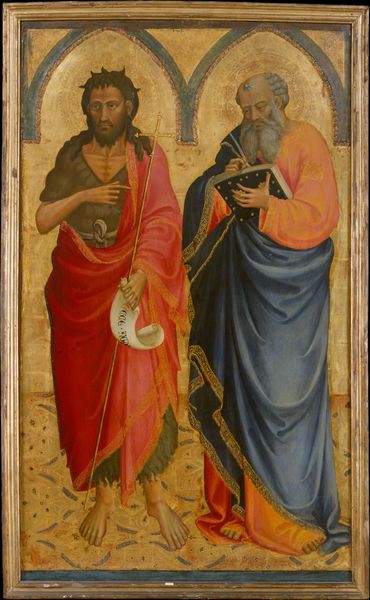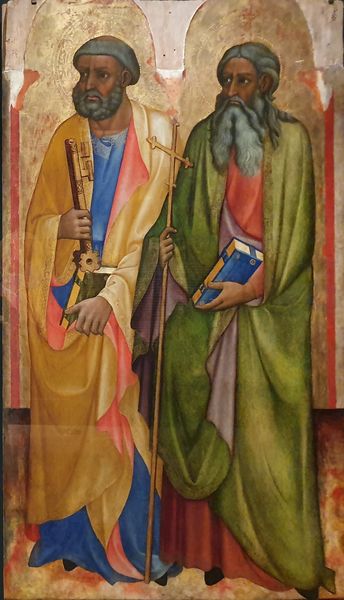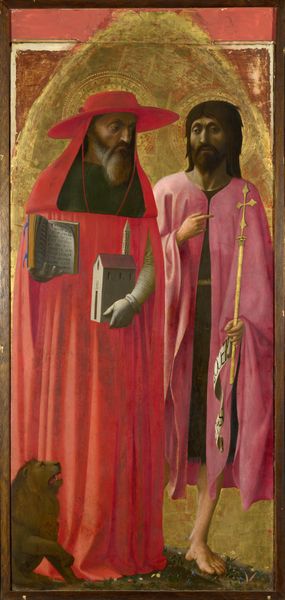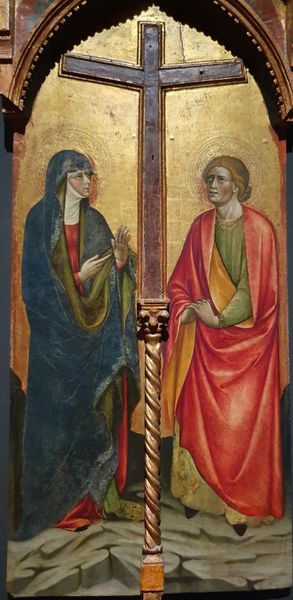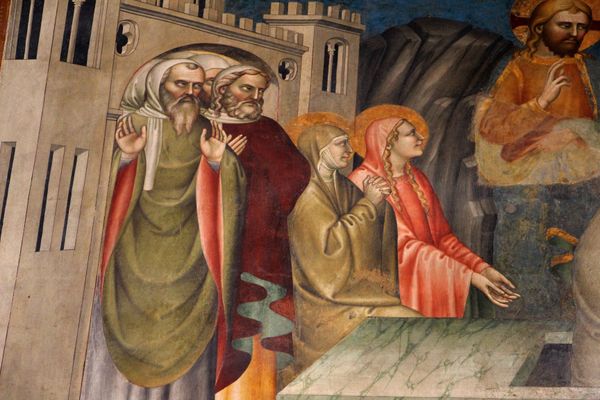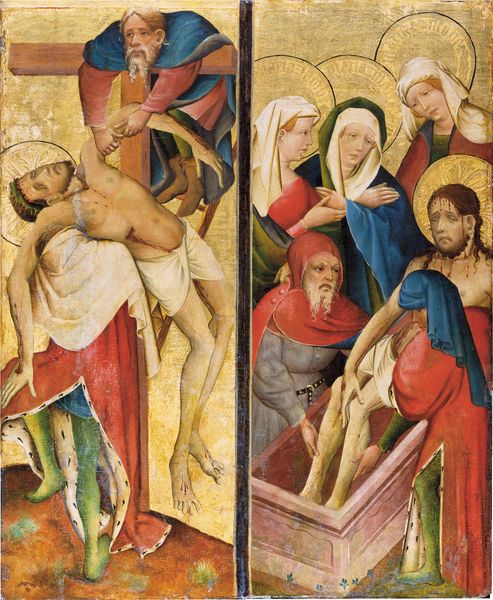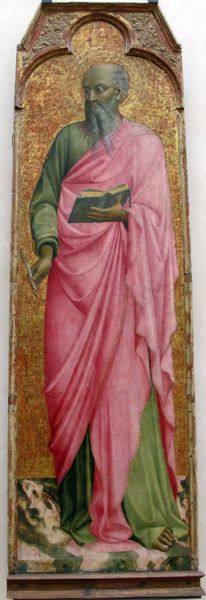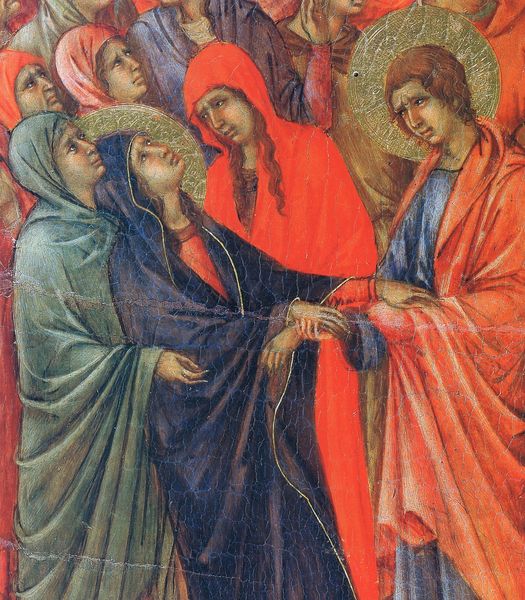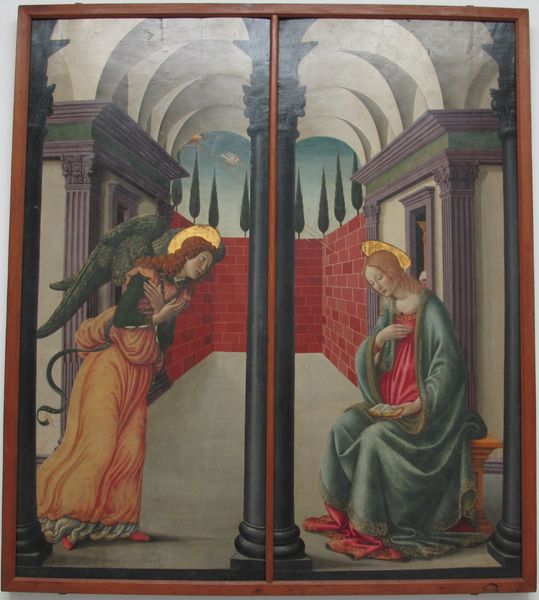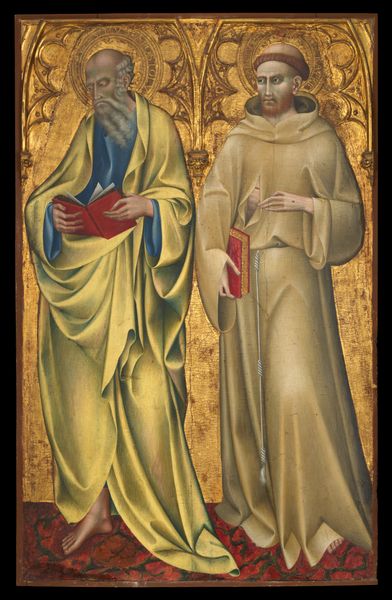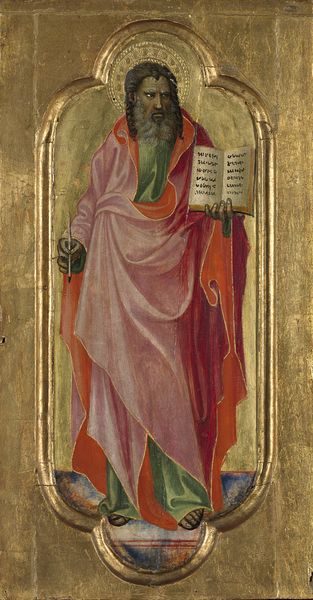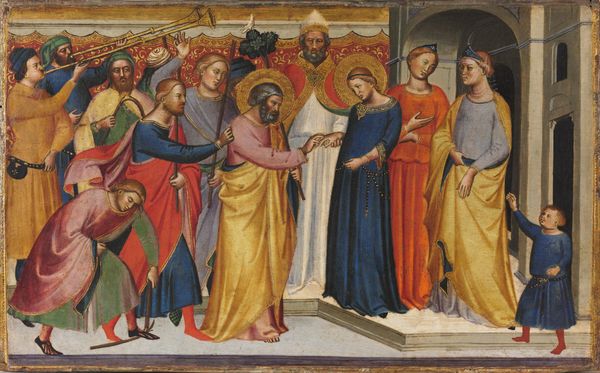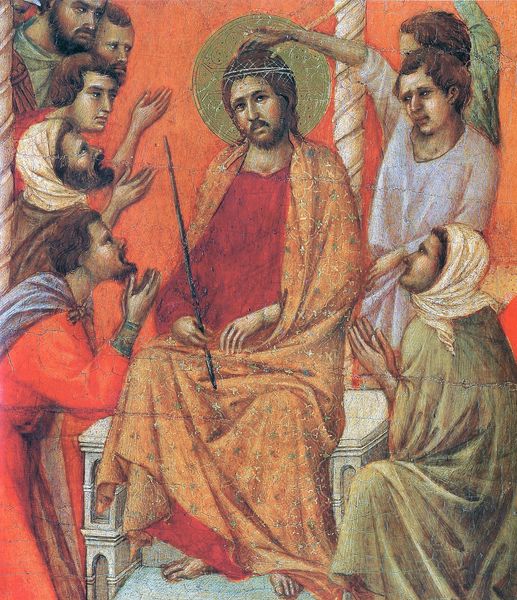
painting, oil-paint
#
portrait
#
painting
#
oil-paint
#
figuration
#
oil painting
#
history-painting
#
portrait art
Copyright: Public domain
Curator: Before us we have a striking, if not somewhat enigmatic, oil painting attributed to Álvaro Pires de Évora titled "São Paulo e São João Baptista.” Editor: Well, my initial impression is one of subdued tension. The palette is warm but muted, almost as if age has faded what was once vibrant. The figures command a large space, there is an emotional severity. Curator: Observe the artist’s command of color and light; how the contrasting draperies create compositional balance but, perhaps even more importantly, how it renders emotional differences between the figures of Paul and John the Baptist. Consider how form dictates reception, shall we? Editor: I find the juxtaposition of symbols truly remarkable. Paul with his sword, representing his martyrdom and the spread of Christianity through conviction, juxtaposed against John, holding the staff, and banner, bearing the words "Ecce Agnus Dei"—Behold, the Lamb of God. It is a potent duality of action and faith. What readings may this evoke? Curator: Note also how Pires uses linear perspective sparingly, favoring flattened forms. The composition pushes our gaze forward. The gaze and bodies turn, ever so slightly, outward, challenging the viewer's space in relation to sacred presence. Editor: Yes, it brings the saints into a tangible, almost confrontational relationship with the viewer. What resonates powerfully for me is how the work embodies cultural memory. The imagery links to centuries of tradition. Curator: I agree entirely with the emphasis of continuity but through difference. Despite some obvious iconographic links with cultural tradition, São Paulo’s expression here is rendered unique because his features reflect local physiological characteristics of Portuguese individuals who lived at the time that the painting was executed. It also gives unique structural position to the overall design of the artwork. Editor: I see them as figures caught between the earthly and the divine, representations that have served symbolic roles to instruct communities across centuries. Curator: A sophisticated arrangement of theological exposition. Editor: Ultimately, a resonant visual reflection of shared beliefs.
Comments
No comments
Be the first to comment and join the conversation on the ultimate creative platform.
